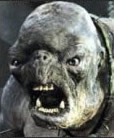Bibliography — Online Articles Suitable for Papers
The articles listed here are freely available, and come from reviewed sources (or in a few cases, are copies/reprints of the reviewed source). You should be safe in using any of the following in a paper, but recognize that online sources such as these are still not as respected and rarely as credible as print resources.
Appleyard, Anthony. Tolkien and Space Travel. This is an interesting article, which originally appeared in “Mallorn,” the Tolkien Society’s periodical. It makes an interesting statement that the concept of “space travel” does in fact appear in Tolkien’s works. It is an interesting article to think about and uses many well-researched examples from the books, showing that this was no mere crackpot idea.* (appeared in Mallorn 34 (1996): 21-24.)
Matthews, Betsy. Mara and Galadriel: MacDonald’s and Tolkien’s Vehicles for Spiritual Truth. This piece compares the works of J.R.R. Tolkien to George MacDonald, another “fairy tale creator.” Matthews claims that both authors, through their descriptions and uses of the elves (or faeries), convey their spiritual beliefs to their readers. Specifically, the article talks about the use of the chief, female character in each story; Mara and Galadriel.* (Rivka’s note: Take a look at the parent organization that publishes the title that this article comes from, and make your own decision about it’s credibility).
Milos, Karyn. Too Deeply Hurt. Milos wrote this article also for Mallorn (Tolkien Society), and it ponders the question of why Frodo decided to leave Middle Earth. The article attempts to bring in current research from the American Psychiatric Association in order to support her point.* (appeared in Mallorn 36 (1998): 17-23.)
Mooney, Chris. Kicking the Hobbit. Mooney discusses his opinion on why Tolkien has been so successful, and comes to the conclusion that, “ultimately, Tolkien’s literary stature may be assured by sheer momentum.”*
New York Times. Articles and Reviews on Tolkien. This is the New York Times site for all of its articles on Tolkien and its reviews of his works. Registration is required to view, but it’s free and allows access to all of the articles. Linking to the site is allowed, but registration is still required. You can request permission to reproduce the articles on your website (it’s a fairly easy process, I checked it out) and you can keep them on your website for about a year. Being from the NY Times, the articles are almost always acceptable to use as research.*
O’Hehir, Andrew. The book of the Century. O’Hehir defends the works of Tolkien, trying to answer the question, in terms familiar the the LOTR fans, “what has it got in its pocketses?” This is a very well written article (from Salon.com) that is slighty easier to read than Turner’s article below.*
Seland, John. Gollum and the Mystery of Evil. This article looks at Gollum as being a “pawn of evil” though he is not corrupted in the same ways as the obvious evil figures, such as Sauron and Saruman. It examines Gollum’s role in the novel, the evil he represents, and how his personality affects the ‘good-ness’ of those he interacts with. He uses the opinions of many others to back up his views, as well as Tolkien’s books themselves. Gives a good background of the history of Middle Earth to show how power has corrupted others. The article gets a little religious towards the end, but uses it to support his opinions.*
Turner, Jenny. Reasons for Liking Tolkien. This article comes from the “London Review of Books” and is very well written (albeit very long). Turner, a freelance journalist, looks at many different aspects of Tolkien’s works, including the names and personalities of creatures, the reasons for the success of LOTR and all the reasons why one should read the books she focuses on; The Hobbit , The Lord of the Rings, and The Silmarillion.*
* Abstract by Ringhilwen









